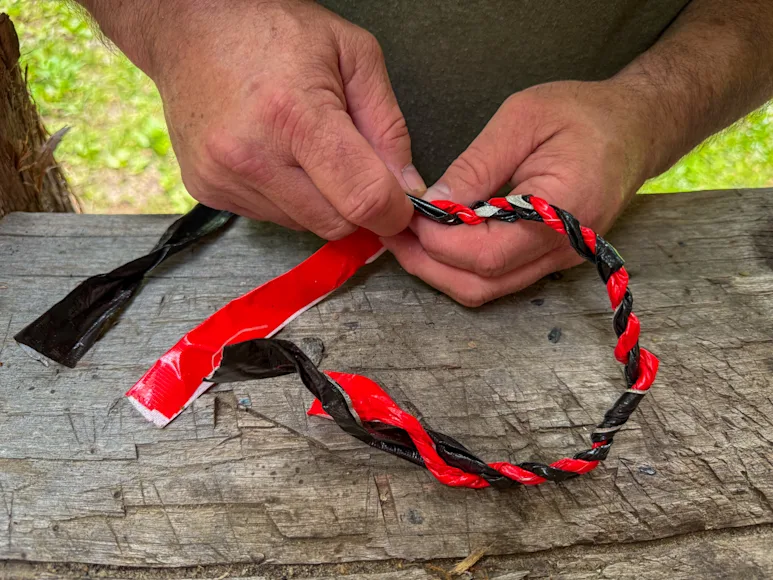I’ve carried duct tape in the field long enough to know it deserves a permanent spot in every gear kit or tackle box. It’s not flashy—but what it lacks in glamour, it makes up for in grit. I’ve used it to patch busted boots, stop bleeding, fix broken tools, and even light a fire when all else failed. Whether you're building a duck blind, hiking the backcountry, or just keeping up with chores around your homestead, this humble roll of sticky silver tape will bail you out more times than you can count.
Duct tape is one of the most recommended pieces of kit that I recommend to our students. We have used so many times it would be impossible to count them all. Here are 10 proven uses that I’ve personally tested in the woods, and that you should know by heart.
Table of Contents
Gear Repairs
First Aid
Fire Starter
Repair Leaks
DIY Sheath or Holster
Tool ID
Make Cordage
Trail Marking
Honorable Mentions
Final Thoughts
10 Uses for Duct Tape
1. Gear Repair in the Wild
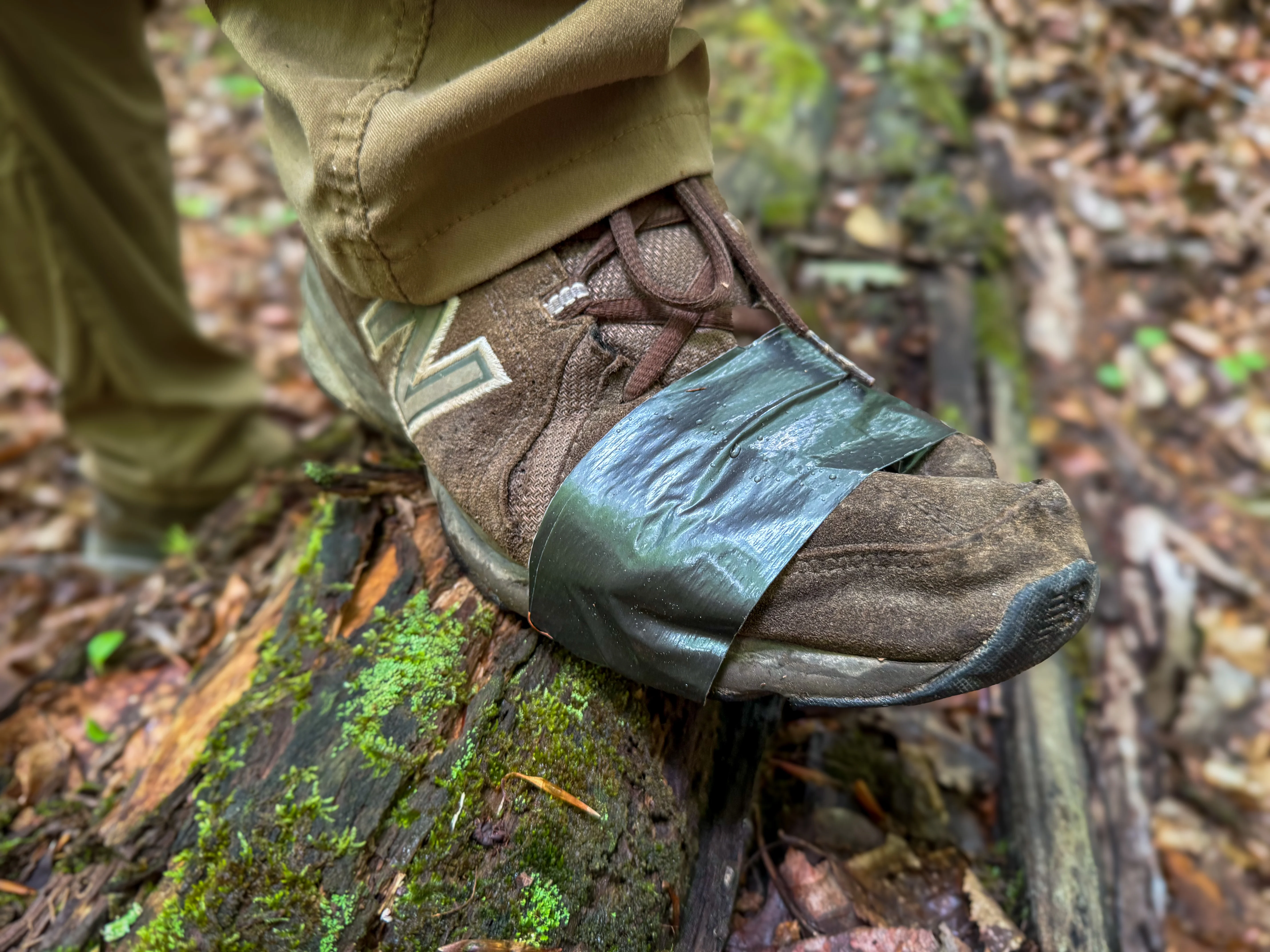
When you’re miles from a gear shop and your tent rips or your pack busts open, duct tape turns into your best friend. I’ve patched sleeping bags, rain flies, and backpack straps, often in the middle of a rainstorm or with the wind howling. You can even tape a shoe or boot sole back on, which I’ve done on more than one occasion when students blew through their footwear in the middle of a class. The trick is to clean the surface as best you can before applying the tape, and if you can warm it up just a bit with your hands, it’ll stick even better.
2. Improvised First Aid
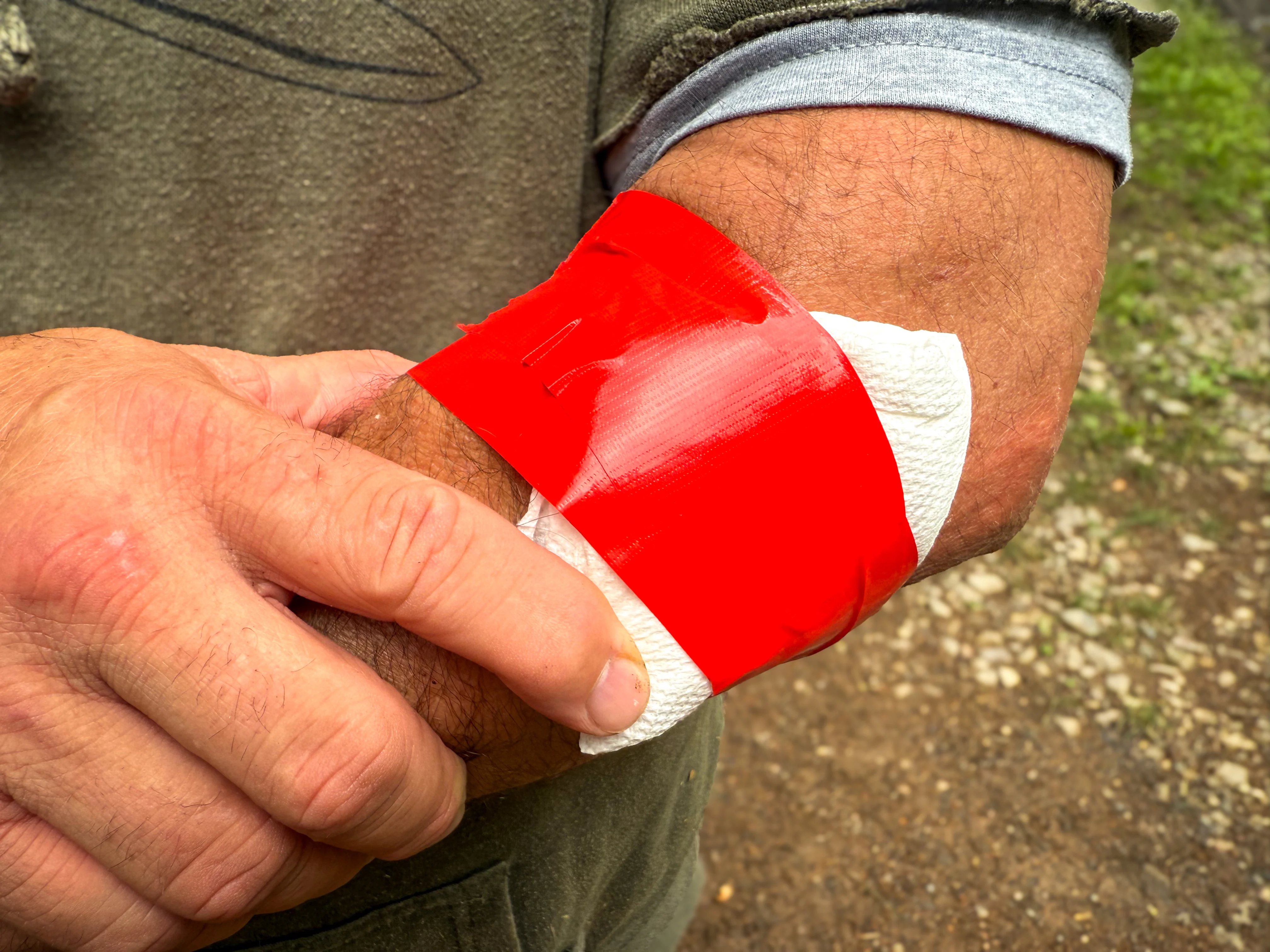
If there’s one skill that separates a prepared outdoorsman from the rest, it’s the ability to adapt on the fly. I’ve used duct tape to secure splints made from sticks, to hold gauze in place on a gushing wound, and even to make butterfly sutures when the skin needed pulling together (for training). It’s not ideal, and it’s definitely not sterile, but it can stabilize the injury until you can get proper medical attention. Just make sure to keep it off open wounds and use a clean dressing underneath if you can. In this photo I am demonstrating that with a folded paper towel and duct tape you can improvise until you get to better FAK items. Even though this works in a pinch, carry some gauze with you whenever you go out for a more sterile option.
3. Field-Ready Firestarter
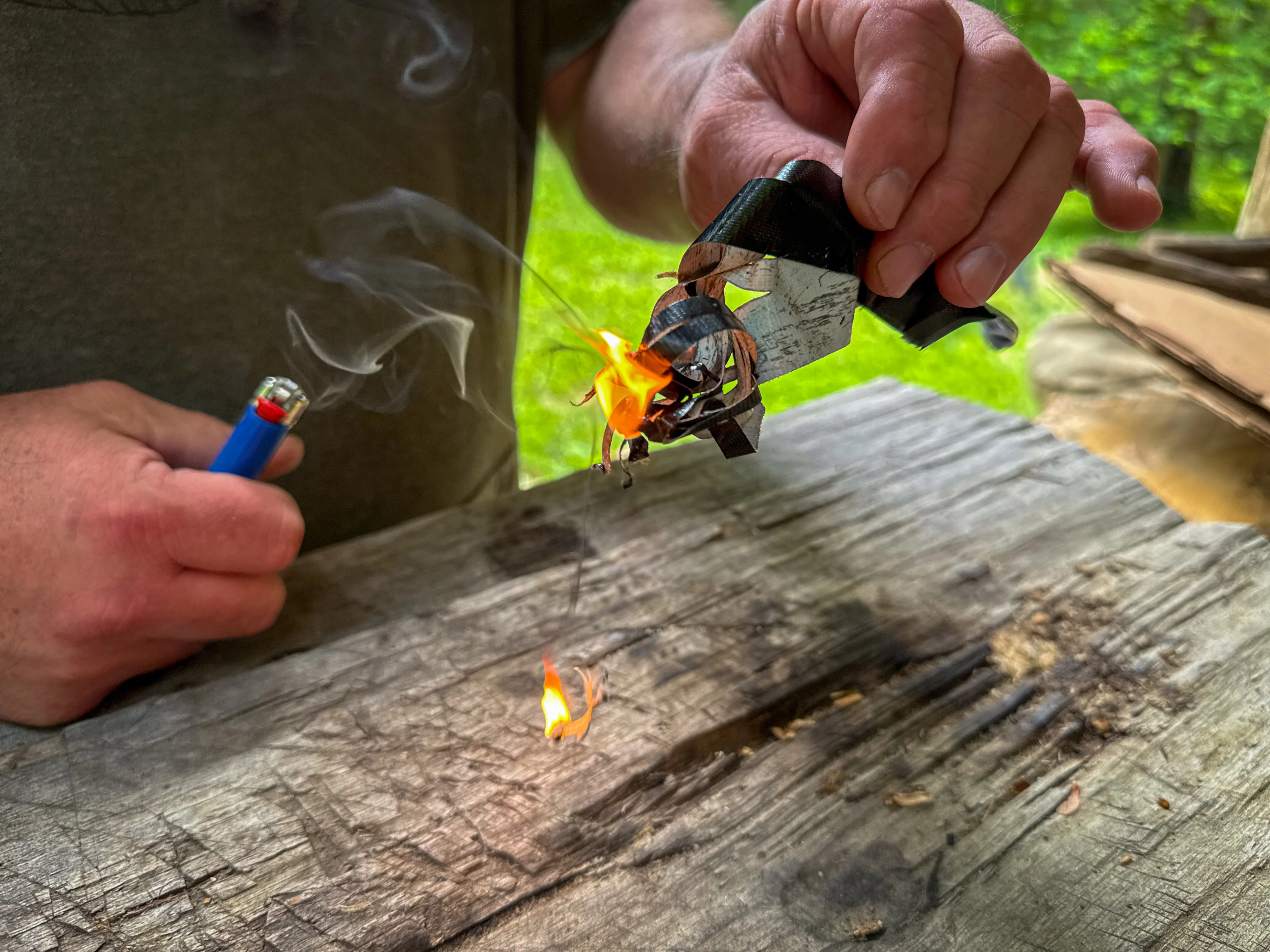
Most folks don’t realize how flammable duct tape really is. Twist a strip into a wick or fray it into fibrous strands, and it’ll catch a spark from a ferro rod or lighter like a champ. On more than one cold, damp evening, that simple trick has meant the difference between a warm campfire and a long, miserable night.
4. Seal a Leaky Water Container

Spring a leak in your water bottle or hydration bladder in the middle of nowhere, and you’ve got a problem. I’ve taped up cracks in Nalgene lids and patched pinholes in bladders, enough to hold water until I made it back to base. It’s not a permanent fix, but it’ll keep you hydrated until you can get a replacement.
5. Make a Sheath or Holster
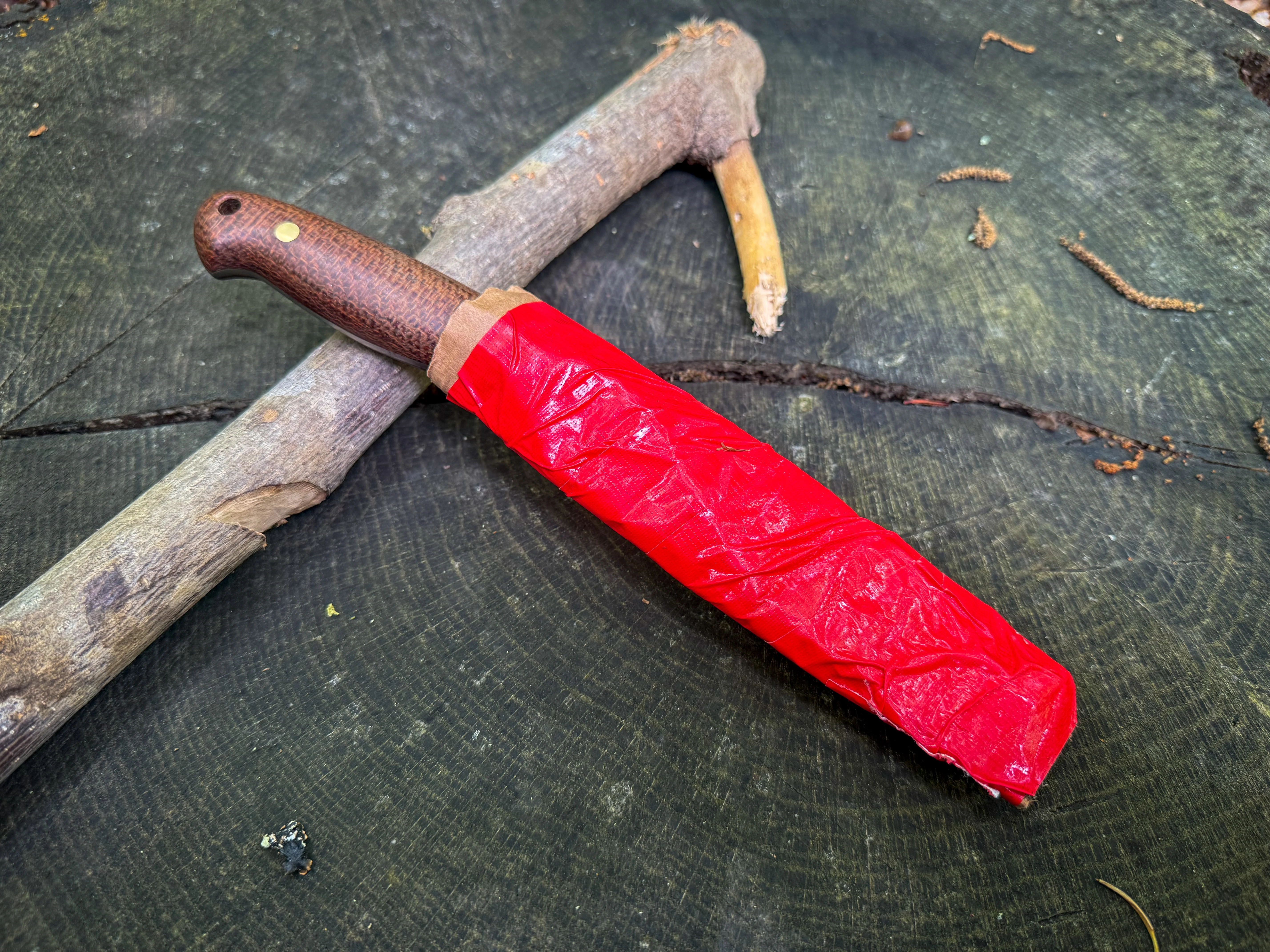
When a belt loop fails or a sheath flap tears loose, or if you lose your sheath all together you don’t need to go full MacGyver you just need duct tape and ingenuity. Pictured here is a super quick cardboard and duct tape sheath I put together for this article. I have used this simple setup to transport and trade blades safely. You can also make sling-style holsters for folding saws and even secured multi-tools to packs with a couple tight wraps. It’s ugly, sure, but it works.
6. Blister Prevention and Foot Care
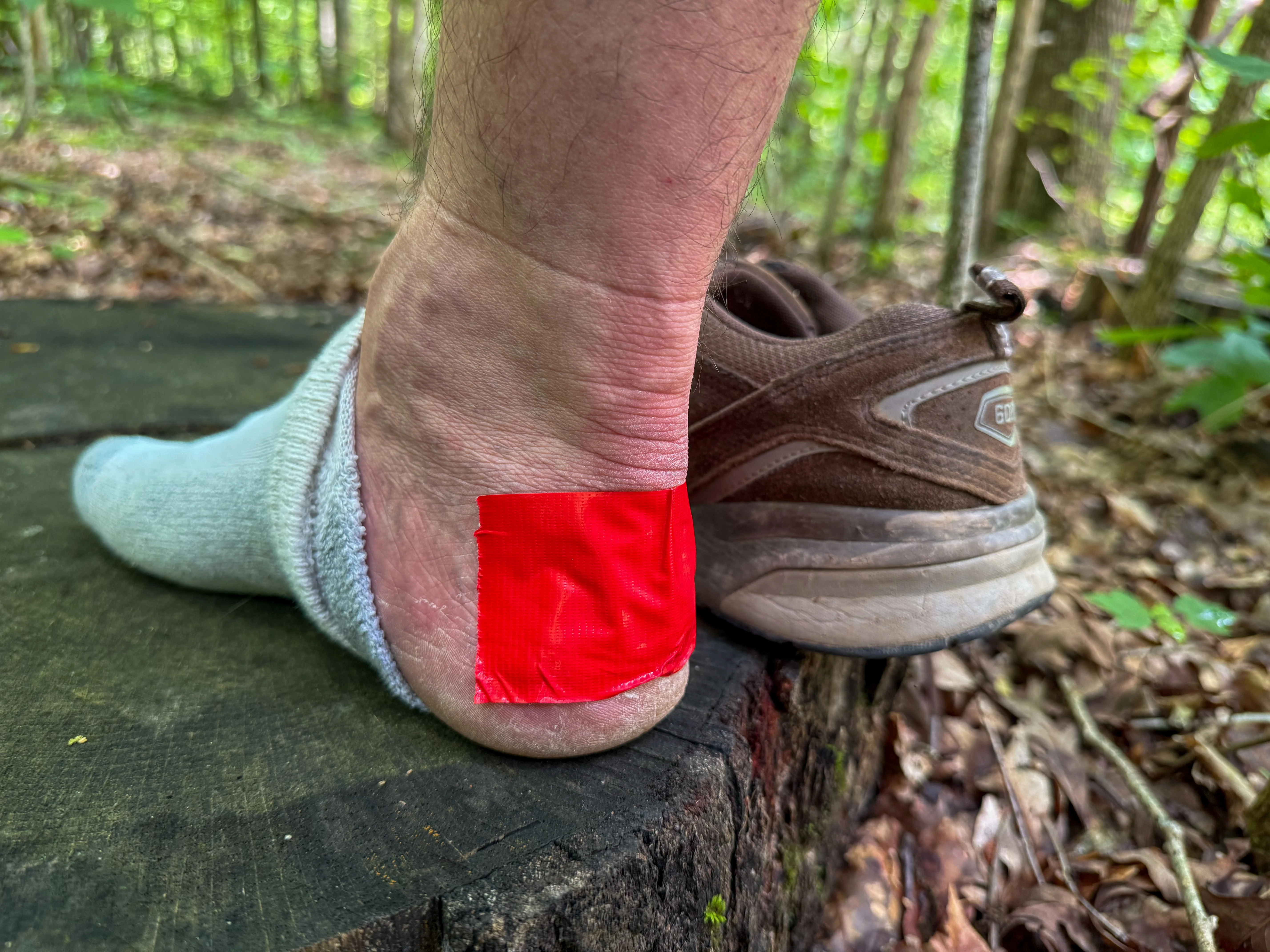
Long hikes mean hot spots. Catch them early and a strip of duct tape can save you from a trip-ruining blister. The key is to apply it before the skin breaks. It acts as a second skin and reduces friction, which is often all you need to make it through a long haul. I keep a few pre-cut strips stuck to my water bottle or knife sheath just for this purpose. It is hard to see in this photo but there is a thin piece of gauze beneath that tape, so it does not stick to blister when I need to remove it.
7. Tool Identification in the Field
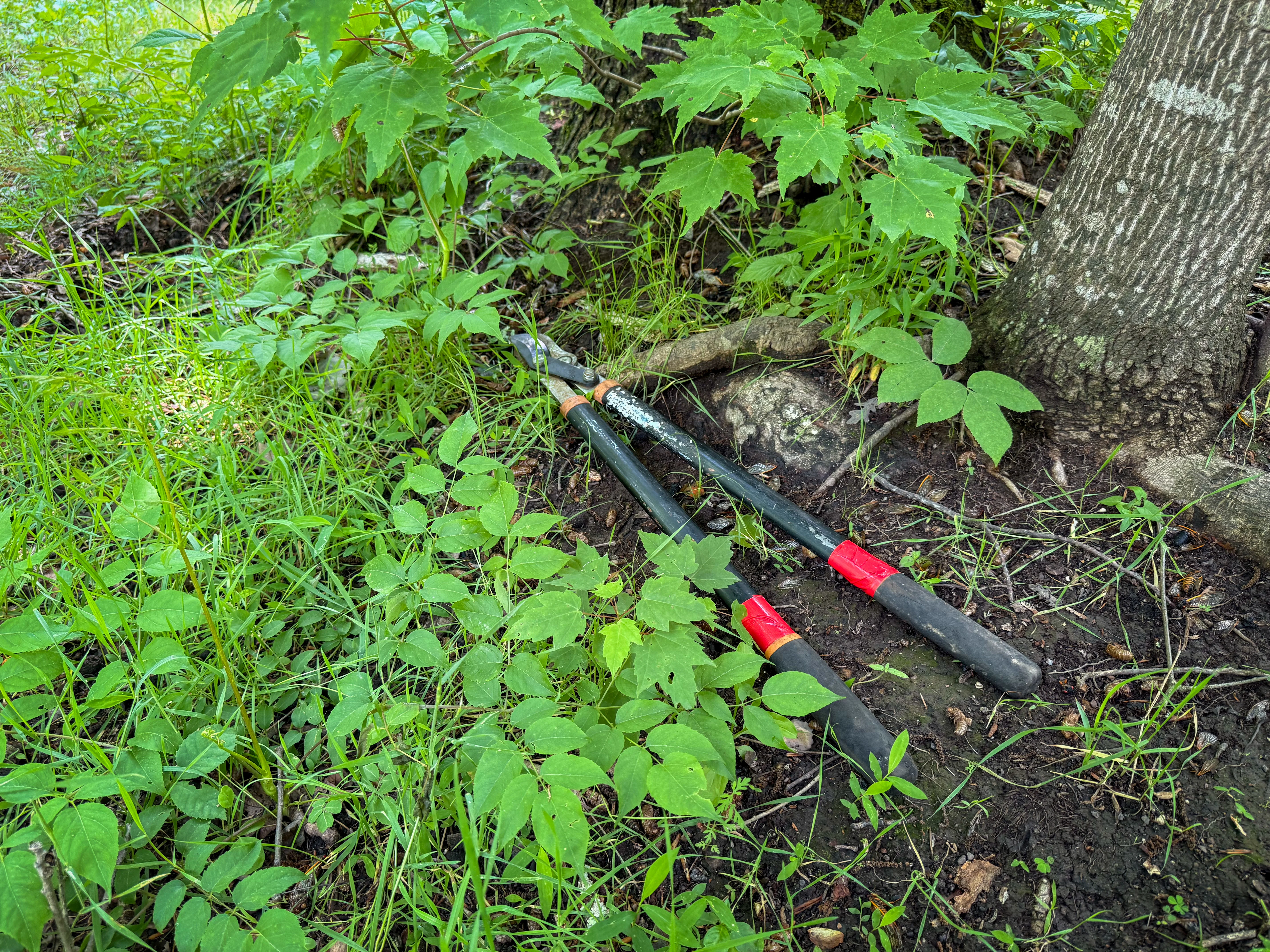
Here’s a use that doesn’t get talked about enough. When I’m out doing habitat work or trail maintenance, hinge-cutting, planting, trimming, I mark my tools with colored duct tape. That way, when I set a tool down in the leaves, I’m not hunting for it an hour later. I’ve wrapped everything from rakes to hatchets to GPS units. Use high-vis colors and wrap the handles so your future self will thank you.
8. Reinforce Tools

Crack the handle on your favorite tomahawk, axe, or hammer and you might think you're out of luck. Not so fast. I’ve wrapped duct tape around handles to both secure them when cracked and to also make them easier to find, and I’ve reinforced tool handles in a pinch to keep a project moving forward. It’s never permanent, but it buys you enough time to finish the job or get back to civilization.
9. Make Cordage or Lashing

When you need to hang a tarp, secure gear, or lash a bundle together, duct tape can be twisted into makeshift cordage. You can braid it, knot it, or wrap it—just don’t expect it to hold up like paracord. But in the short term? It’ll absolutely get the job done. Braided duct tape, like most braided materials, increases the breaking strength considerably.
10. Trail Marking and Rescue Signaling
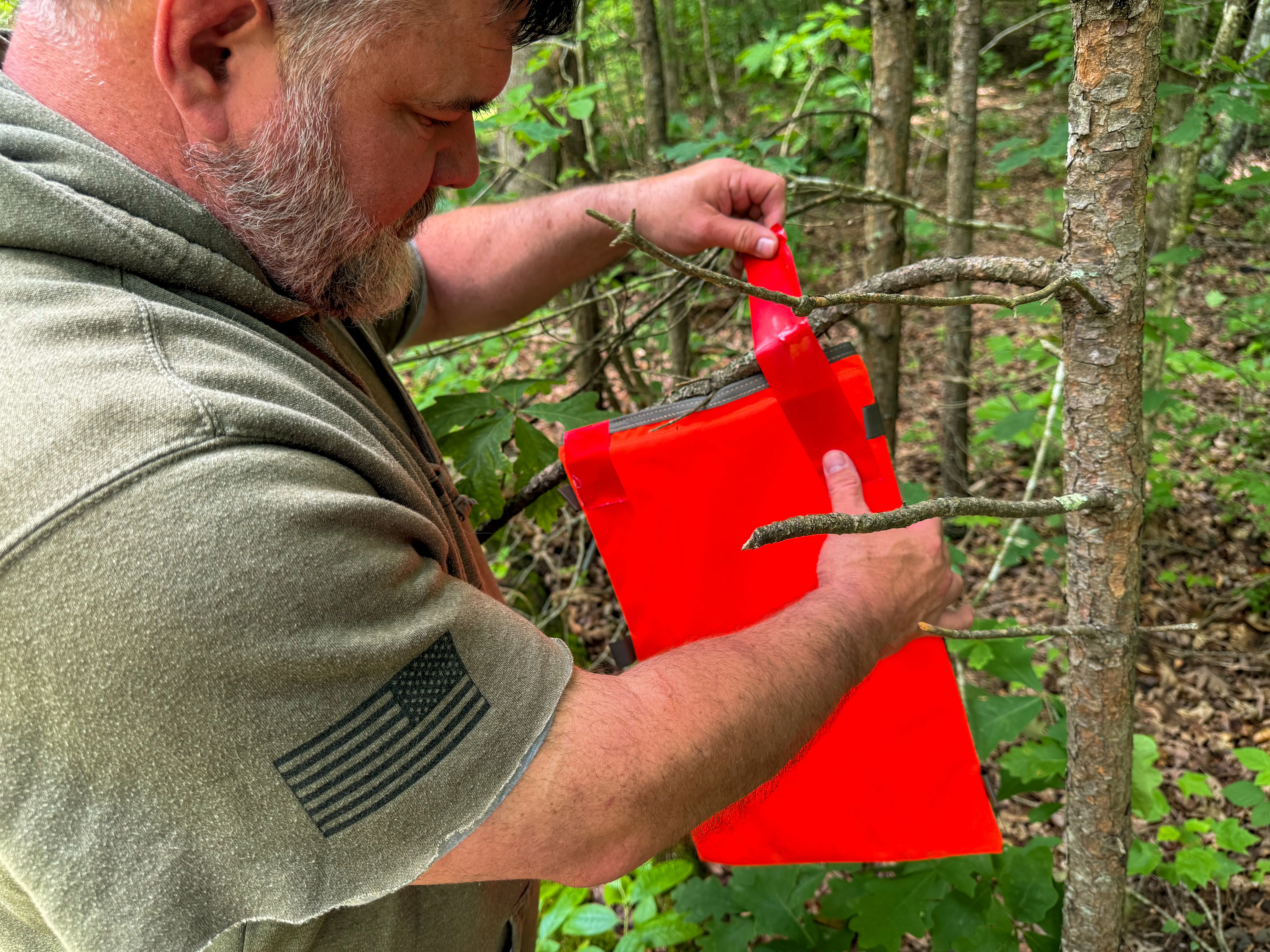
Lost in the woods? Mark your path with duct tape strips every 100 yards or so, and you’ll not only find your way back, but help rescuers find you too. I’ve used it to mark blood trails during bow season, and to signal team members during search-and-rescue training. You should always carry a sit pad, bandana or similar for signaling. These items, along with duct tape, have numerous uses beyond signaling.
Honorable Mentions
These might not have made our Top 10 list, but they deserve mentions:
Use duct tape to quiet clanking gear on your pack or rifle.
Tape over your muzzle to keep snow and dirt out
Wrap your fingers when you’ve worn through gloves or just need extra grip.
One of my old-timer mentors even duct tape it as an improvised tick remover: Loop a piece, press it to the tick crawling on you, and pull. You can also place it on a stick so you can get to ticks in the hard reach parts of your back.
Final Thoughts on How to Use Duct Tape
]There’s a reason duct tape has been a staple in the field since long before survival TV made it trendy. It’s tough, versatile, and cheap, and best of all, it just works. Throw a flattened roll in your pack or wrap a few feet around your water bottle, lighter or knife sheath. You might not need it every trip, but when you do, you’ll be glad it’s there.

